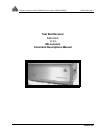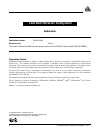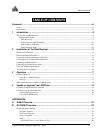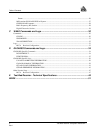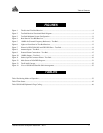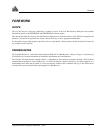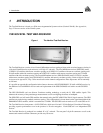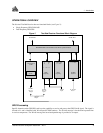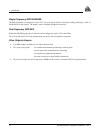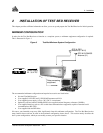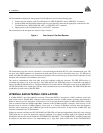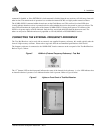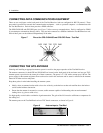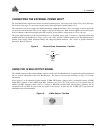
1 - Introduction
8 Test Bed Receiver Subsystem Addendum – Rev 1
1 INTRODUCTION
The Test Bed Receiver is based on a Wide Area Augmentation System receiver (NovAtel WAAS). See Appendix A,
Page 22 for an overview of the WAAS system.
THE NOVATEL TEST BED RECEIVER
Figure 1 The NovAtel Test Bed Receiver
The Test Bed Receiver consists of two NovAtel Millennium receivers packaged along with associated support circuitry in
a NovAtel WAAS Receiver style enclosure (a 4U high 19” sub rack). The first Millennium receiver (GPS GEO) tracks
12 GPS L1/L2 satellites with narrow correlator spacing, or 10 GPS L1/L2 satellites with narrow correlator spacing and 1
WAAS satellite with wide correlator spacing or 8 GPS L1/L2 satellites with narrow correlator spacing and 2 WAAS
satellites with wide correlator spacing. The second Millennium receiver (GPS GLONASS) tracks 12 GPS L1 satellites
with narrow correlator spacing and 6 GLONASS L1 satellites with narrow correlator spacing. Refer to Default Channel
Assignments in Appendix E, Page 50 for more details on the channel configurations. Data output rates will be nominally
at one hertz.
It is possible to upgrade this configuration in the future to become a full EGNOS RIMS-C, WAAS or MSAS receiver, by
the addition of several MEDLL receiver cards and replacement of the GPS GLONASS card with a second GPS GEO
card.
The GPS GLONASS card uses Narrow Correlator tracking technology to track the L1 GPS satellite signals. This
enhances the accuracy of the pseudorange measurements as well as mitigating the effects of multipath.
The GPS GEO card will track GEO satellites that transmit using the RTCA/DO-229A WAAS signal structure. The GEO
satellites are tracked using standard correlator spacing. This configuration is chosen based on the signal bandwidth of the
IMMARSAT GEO satellites, which is constrained to 2.2 MHz. The GPS GEO card can track two C/A code GEOs on L1.
The Test Bed Receiver incorporates a L1/L2 GPSCards, which uses NovAtel’s P-Code Delayed Correlation Technology,
providing superior performance even in the presence of P-code encryption. Each GPSCard is an independent GPS
receiver.
The Test Bed Receiver is packaged in a standard 4U x 19” sub-rack. The rear panel’s 9-pin D connectors as well as the
antenna and external oscillator connectors provide easy I/O access.



